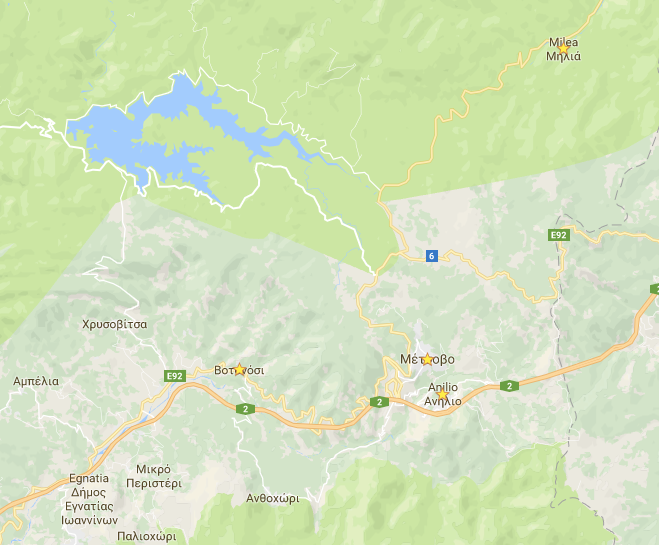
Introduction
Research on the argument structure of predicates has shown that intransitive (i.e. one-argument) verbs can be subdivided into unergatives and unaccusatives and that this distinction may be reduced to a single semantic/syntactic difference (the ‘Unaccusativity Hypothesis’ (Perlmutter 1978)): whereas unaccusatives take a single object argument (typically, a theme/patient), which may become a derived subject (1a), unergatives take a single subject argument (typically, an agent) (1b):
(1) a. È arrivato Giovanni / Giovanni è arrivato.
is arrived Giovanni / Giovanni is arrived
b. Giovanni ha telefonato.
Giovanni has telephoned [Italian]
Reflexive/reciprocal verbs denote an action applied by the Agent to itself, and they have been analysed in the literature as intransitive predicates (Reinhart & Siloni 2004). Within Romance, such verbs are typically marked productively by a reflexive/SE-clitic, which appears in the same position as an accusative clitic. Crosslinguistically, SE-clitics may also appear on predicates that lack a reflexive meaning, such as anti-causatives, impersonals, middles, and passives (Bentley 2006). This systematic morphological fact, along with various syntactic facts (e.g. Past Participle Agreement; BE selection), has led some researchers to propose a common (underlying) unaccusative analysis for all these (semantic) predicates (for discussion, see Reinhart & Siloni 2004). An immediate problem for such an analysis is that true/derived reflexives (i.e. reflexives derived from transitive predicates) seem to pattern with unergatives in certain respects (Reinhart & Siloni 2004). In fact, the problem seems to be more widespread, in that the morphological, syntactic, and semantic aspects of various SE-predicates do not always correlate with each other, contrary to what is expected. For instance, SE-marking does not always correlate with an unaccusative structure (cf. true reflexives), nor does an unaccusative structure always correlate with SE-marking (e.g. Fr. se briser ‘break’ vs. couler ‘sink’). Moreover, SE-marking may correlate with more than one type of semantic predicates (e.g. impersonals vs. reflexives), while sometimes predicates falling into the same semantic class are marked differently (e.g. Fr. (se) briser vs. casser ‘break’ in their inchoative/intransitive use).
Such ‘unaccusativity mismatches’ are common crosslinguistically, and they pose important questions regarding the morpho-syntactic vs. semantic and the categorical vs. gradient nature of unaccusativity (Bentley 2006). Despite these mismatches, the presence of SE-clitics in all these structures cannot be accidental. The question, then, that has driven past research is what the necessary and sufficient conditions are for the presence of SE-clitics, and how the rest of the properties of the relevant structures follow. This question, in turn, appears to be related also to the morpho-syntactic nature of SE-clitics, e.g. as (internal/external) arguments, and/or as parts of the verbal predicate.
State of the art
The linguistic literature abounds with empirical descriptions/generalisations and with theoretical explanations regarding reflexive-clitic marked predicates in Romance and other languages, and the more general question of unaccusativity mismatches. From an empirical point of view (see Dobrovie-Sorin 2005; Medová 2009 for an overview), most analyses are restricted to a single language, or to a limited number of different languages. Often, the same data (from standard varieties) are discussed, as the main purpose is to offer a more adequate analysis. From a theoretical point of view (see Levin & Rappaport-Hovav 2005 for an overview), some researchers have argued in favour of a purely syntactic approach to unaccusativity, others in favour of a purely semantic approach, and others in favour of a mixed syntactic-semantic approach. The latter type is considered to be the most influential, given the common consensus that only such an approach can adequately account for phenomena related to the morpho-syntactic vs. semantic unaccusativity alignment of predicates (although see Bentley 2006). Within this type, several sub-types exist, depending on one’s assumptions about the primary role of semantics (projectionist approaches) vs. syntax (constructional approaches). Finally, some approaches focus on the morpho-syntax of SE-clitics across structures, adopting an unificationist or a separationist perspective (see Dobrovie-Sorin 2005 and Medová 2009 for an overview).
Regarding the study of Aromanian spoken in Greece (Beis 2000), and of Aromanian SE-clitics in particular, besides secondary sources (e.g. fairy tale collections) and the extensive and now old, though non-exhaustive, descriptive work by 19th/early 20th century Romanian scholars, more recent and linguistically informed studies focus only on a single grammatical level of description of a ‘common’ Aromanian (typically, lexical morphology and/or phonology) (e.g. Dinas & Katsanis 1990), or on a few phenomena only, taken from one or few varieties (cf. the works by Hector Campos & Melita Stavrou) (and a similar situation applies to the study of Aromanian outside Greece (Tomić 2006). Beis (2000) is the only systematic description of a single Aromanian variety in Greece (Metsovo village) that is currently available. It includes a (functionalist) morphophonological description of the verbal and nominal paradigm, and very few basic points on syntax, however it does not address the phenomena and questions we aim to examine. This project aims to fill this gap, through the collection (which will be led by solid research questions informed by state-of-the-art research), analysis, and study of novel empirical data from a cluster of Aromanian varieties spoken in North-Western Greece.
Overview of the project
This project aims to contribute to a general theory of reflexive clitics and their relation to argument structure/unaccusativity, by studying the system of SE-clitics in a cluster of south-eastern Aromanian varieties spoken in the Metsovo area, Epirus, North-Western Greece. Aromanian is a highly endangered Eastern Romance variety spoken by clusters of populations dispersed throughout the Balkans (Tomić 2006). Linguistically, it is closely related to other Eastern Romance varieties, namely Romanian, Megleno-Romanian, and Istro-Romanian. In Greece, it is not written, taught, or used for any other purposes besides everyday communication within the family/village (Dinas & Katsanis 1990; Beis 2000). A high degree of micro-variation has been reported for Aromanian, along with a significant influence from Greek (especially in terms of vocabulary and morpho-phonology) (Dinas & Katsanis 1990; Beis 2000; Tomić 2006), as well as several Balkan Sprachbund properties (e.g. avoidance of infinitive) (Tomić 2006).
Aromanian spoken in Greece has a set of accusative/dative SE-clitics, which are syncretic with accusative personal clitics (besides 3rd person sg/pl, which surfaces as si) (Dinas & Katsanis 1990; Beis 2000), contrary e.g. to Romanian, Megleno-Romanian, or Aromanian spoken in fYR Macedonia (Tomić 2006). What is special about these SE-clitics is that: (a) they appear in contexts that resist SE-clitics in standard Romance; (b) they may interact with other clitics in ways not typically found in standard Romance. The general picture that emerges from the available data is that the Aromanian SE-system realises a number of properties which are related to various different systems in the rest of Romance (including Romanian), and which bring it closer to the Greek medio-passive system. Such a ‘mixed’ system is important from an empirical point of view, especially given the variation found in the rest of Romance, and the plausible influence from Greek. It is also important from a theoretical point of view, as the investigation of the morpho-syntactic features participating in SE-constructions, and their comparison to Romance, will allow us to better understand whether the appearance of SE in Aromanian (and, hence, in Romance more generally) involves the realisation of the same set of morpho-syntactic features across all structures (the null hypothesis), or alternatively whether it is morphologically or semantically conditioned (e.g. via underspecification of syntactic features in the morphological or the semantic representation).
Objectives
The objectives of this project are both empirical and theoretical, and they are intimately connected. The overall aim is to propose a general theory of SE-clitics in relation to the properties of the argument structures they appear in, based on a solid empirical foundation. In particular, the project aims to document all SE-structures of an undocumented and highly endangered Eastern Romance variety that has been in contact with Greek, and to analyse the variation we find both within the language and across related languages (with a special emphasis on Romanian).
The analysis will allow us to specify which features participate in SE-structures, and how morphology, syntax, and semantics interact. The main empirical objective is to document an important part of the grammar of the Aromanian varieties spoken within the Metsovo municipality (villages Anilio, Metsovo, Milia, Votonosi), probably one of the largest and most dense Aromanian-speaking communities in Greece (Beis 2000).

As noted above, although a significant degree of micro-variation has been reported for these dialects, it has never been documented in a systematic way. Moreover, the morpho-syntax of SE-structures and their argument structure properties have not been documented and investigated systematically. Given that Aromanian faces a genuine risk of extinction, the need for a systematic documentation is urgent. Data collection and documentation will be guided by clear theoretical questions informed by state-of-the-art research, as these only may guarantee solid empirical generalisations.
The main theoretical objective is to use these empirical generalisations to establish which linguistic features (e.g. agent, cause, aspect, case, verbal roots) are sufficient and/or necessary conditions for the presence of SE-clitics in various structures, how any interactions among these features give rise to particular argument structures/properties, how these structures compare to Romanian/Romance, and whether any differences might be related to Greek or some other influence. Such a theoretical approach, which assumes that complex morphosyntactic structures, such as verbs and their arguments, are decomposed into constituent parts (Levin & Rappaport-Hovav 2005), is expected to give rise to a more gradient view of unaccusativity, where particular morpho-syntactic features/feature combinations, possibly in correlation with their semantic and morpho-phonological representations, correspond to ‘thresholds’ that define higher order categorical distinctions. Although there have been many theoretical hypotheses and tools in the literature, the debate is far from settled, mainly because there is lack of clear evidence about which features/feature interactions are relevant or not, within and across grammatical levels. This study is suited to address such a goal, as Aromanian SE-clitics display uniquely mixed properties within (standard) Romance.
Research methodology and approach
The empirical objectives of the project will be met in two stages: during the first stage, a comprehensive survey of the existing literature on the Aromanian varieties targeted by the project (and any related varieties) will be carried out. This survey, which will also be informed by relevant research outcomes on Romanian and Romance more generally, will include any available scientific work on Aromanian SE-clitics and structures, including information on the different verb types involved, their argument structure, and their morpho-syntactic and semantic properties. The survey will also integrate any relevant secondary sources and non-academic work (such as dictionaries and grammars), as the existing literature does not offer a complete picture.
The second stage will involve fieldwork with native speakers. Fieldwork is indispensable for this type of research, as certain properties of the grammar need to be explicitly tested. The best method is the use of a questionnaire, combined with the freer interview method. A written questionnaire, containing the sentences that need to be translated into the variety, is required, as it allows one to collect and compare coherent and homogenous results across varieties. However, the questionnaire will be compiled together with the researcher, allowing the informant to comment on the proposed translation. Both methods are widely used in dialectological research projects, and are known to provide reliable data. Additionally, an acceptability judgment questionnaire/task will be used, which will allow the researcher to test what the limits of grammar are and whether speakers have preferences (e.g. between active vs. passive structures).
Bibliography
Beis, Stamatis. 2000. ‘Le Parler Aroumain de Metsovo. Description d’une langue en voie de disparition’. Unpublished PhD. Dissertation, Université Paris V- René Descartes.
Bentley, Delia. 2006. Split Intransitivity in Italian. Berlin: Mouton de Gruyter.
Dinas, Konstantinos & Nikolaos Katsanis. 1990. Γραμματική της Κοινής Κουτσοβλαχικής [Grammar of the Common Kutsovlach]. Thessaloniki: Archive of Macedonian Studies.
Dobrovie-Sorin, Carmen. 2005. ‘The SE-anaphor and its role in argument realization’. In Martin Everaert, and Henk van Riemsdijk (eds.) The Blackwell Companion to Syntax., vol. 4. Oxford: Blackwell, 118–179.
Kayne, Richard. 2005. ‘Some notes on comparative Syntax, with Special Reference to English and French’, in Guglielmo Cinque and Richard Kayne (eds.) The Oxford Handbook of Comparative Syntax. Oxford: OUP, 3-69.
Levin, Beth & Malka Rappaport-Hovav. 2005. Argument Realization. Cambridge: CUP.
Medová, Lucie. 2009. ‘Reflexive Clitics in the Slavic and Romance Languages’. Unpublished PhD. Dissertation, University of Princeton.
Pană-Dindelegan, Gabriela. 2013. The Grammar of Romanian. Oxford: OUP.
Perlmutter, David. 1978. ‘Impersonal Passives and the unaccusative hypothesis’, in Papers from the Annual Meeting of the Berkeley Linguistic Society, 4: 157-89.
Reinhart, Tania & Tal Siloni. 2004. ‘Against an Unaccusative Analysis of Reflexives’, in Artemis Alexiadou, Elena Anagnostopoulou, and Martin Everaert (eds.) The Unaccusativity Puzzle. Explorations of the Syntax-Lexicon Interface, Oxford: OUP, 159-80.
Săvescu, Oana. 2012. ‘When Syncretism Meets Word Order. On Clitic Order in Romanian’. Probus 24: 233-56.
Tomić, Olga Mišeska. 2006. Balkan Sprachbund. Morpho-syntactic Features. Dordrecht: Springer.






